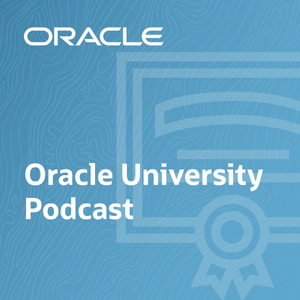
00:00
Welcome to the Oracle University Podcast, the first stop on your cloud journey. During this series of informative podcasts, we’ll bring you foundational training on the most popular Oracle technologies. Let’s get started!
00:25
Lois: Welcome to the Oracle University Podcast! I’m Lois Houston, Director of Innovation Programs with Oracle University, and with me is Nikita Abraham, Principal Technical Editor.
Nikita: Hey everyone! In our last episode, we examined OCI Container Engine for Kubernetes, including its key features and benefits.
Lois: Yeah, that was an interesting one. Today, we’re going to discuss virtual nodes and their role in enhancing Kubernetes deployments in Oracle Cloud Infrastructure.
Nikita: We’re going to compare virtual nodes and managed nodes, and look at their differences and advantages. To take us through all this, we have Mahendra Mehra with us. Mahendra is a senior OCI instructor with Oracle University.
01:09
Lois: Hi Mahendra! From our discussion last week, we know that when creating a node pool with Container Engine for Kubernetes, we have the option of specifying the type of Oracle nodes as either managed nodes or virtual nodes. But I’m sure there are some key differences in the features supported by each type, right?
Mahendra: The primary point of differentiation between virtual nodes and managed nodes is in their management approach. When it comes to managed nodes, users are responsible for managing the nodes. They have the flexibility to configure them to meet the specific requirements.
Users are also responsible for upgrading Kubernetes on managed nodes and for managing cluster capacity. You can create managed nodes and node pools in both basic clusters and enhanced clusters, whereas in virtual nodes, virtual nodes provide a serverless Kubernetes, experience, enabling users to run containerized applications at scale. The Kubernetes software is upgraded and security patches are applied while respecting application's availability requirements. You can only create virtual nodes and virtual node pools in enhanced clusters.
02:17
Nikita: What about differences in terms of resource allocation? Are there any differences we should be aware of?
Mahendra: When it comes to managed nodes, the resource allocation is at the node pool level and the users specify CPU and memory resource requirements for a given node pool. In the virtual nodes, the resource allocation is done at the pod level, where you can specify the CPU and memory resource requirements, but this time, as requests and limits in the pod specification.
02:45
Lois: What about differences in the approach to load balancing?
Mahendra: When it comes to managed nodes, load balancing is between the worker nodes, whereas in virtual nodes, load balancing is between pods.
Also, load balancer security list management is never enabled, and you always must manually configure security rules. When using virtual nodes, load balances distribute traffic among pods' IP addresses and then assign node port.
03:12
Lois: And when it comes to pod networking?
Mahendra: Under managed nodes, both the VCN-Native Pod Networking CNI plugin and the flannel CNI plugin are supported. When it comes to virtual nodes, only VCN-Native Pod Networking is supported.
Also, only one VNIC is attached to each virtual node. Remember, IP addresses are not pre-allocated before pods are created. And the VCN-Native Pod Networking CNI plugin is not shown...
07/02/24 • 14 min
Generate a badge
Get a badge for your website that links back to this episode
<a href="https://goodpods.com/podcasts/oracle-university-podcast-388362/working-with-oke-virtual-nodes-59051389"> <img src="https://storage.googleapis.com/goodpods-images-bucket/badges/generic-badge-1.svg" alt="listen to working with oke virtual nodes on goodpods" style="width: 225px" /> </a>
Copy